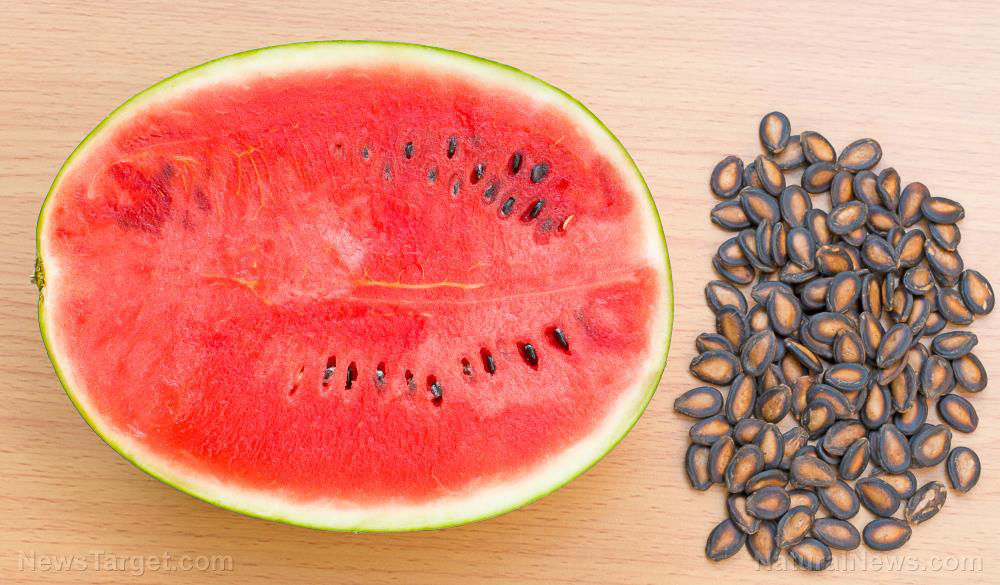
The watermelon originated in Africa. However, the wild gourd does not resemble the domesticated varieties, which are large, cylindrical, and feature red flesh with a sweet taste.
Instead, wild watermelons are small, round, and have white flesh. They taste very bitter due to high levels of cucurbitacins.
Experts remain unsure where and when humans started domesticating watermelons. Some propose that the process took place in southern Africa, while others believe it happened in the continent's western region.
Egyptologists hold a different view of the matter. Murals on the walls of several ancient Egyptian tombs showed objects that appeared to be watermelons.
One of the watermelons depicted in the picture would not have looked out of place in a modern-day grocery, market, or home.
Further, 19th century researchers came across a mummy in a tomb from roughly 3,500 years ago. On top of the preserved corpse rested leaves from a watermelon plant. (Related: Watermelon juice: A refreshing way to boost heart health and improve blood flow.)
Leaves from an ancient Egyptian tomb reveal the origins of domesticated watermelons
Earlier this year, Ludwig Maximilian University of Munich (LMU) researcher Susanne Renner heard about the discovery. It occurred to her that the DNA of the watermelon leaves might provide clues regarding the characteristics of the popular fruit during ancient times.
She learned that the 19th century expedition dispatched several leaves to the renowned botanist Joseph Dalton Hooker. During that time, Hooker ran the Kew Gardens in southwest London, UK.
Renner contacted the UK botanical garden for assistance. Kew researcher Mark Nesbitt tracked down the display case that held the ancient watermelon leaves.
The watermelon leaves arrived at Kew in 1876. Nearly 143 years passed since Hooker's staff placed the ancient samples in the display case.
Nesbitt found it hard to pry the old container open. But he eventually obtained a tiny sample of the leaf, which he gave to Renner.
Back in Germany, LMU researcher Guillaume Chomicki sequenced the DNA of the leaf fragment. He only managed to obtain a partial genome sequence.
However, the recovered DNA fragment contained two critical genes that revealed the traits of the watermelon consumed by ancient Egyptians.
Two genetic mutations gave domesticated watermelons their sweet red flesh
Watermelons possess a gene that controls the production of the bitter-tasting cucurbitacins. Domesticated melons deactivate this gene to make the flesh taste sweeter.
The genome fragment from the ancient Egyptian watermelon displayed a mutation that deactivated the cucurbitacin-related gene. Its gourd likely possessed sweet flesh.
The second critical gene helps produce an enzyme that turns the red pigment lycopene into a different compound. Lycopene gives domesticated watermelon flesh its vivid color.
The second gene got disabled by a mutation. Therefore, the flesh of the ancient Egyptian watermelon not only tasted sweet but also looked red.
The recovered DNA revealed nothing about the size and shape of the fruit. But the picture in the tomb showed an elongated watermelon, indicating that it acquired most of its traits at least 3,500 years ago.
Finally, the ancient genome sequence resembled the DNA of a watermelon variety that African farmers grew in Darfur, Sudan. The fruit possessed white flesh that tasted sweet.
It seemed that the domesticated watermelon of ancient Egypt started in Sudan and moved northward along the Nile River. Somewhere along the line, the fruit developed the mutation that gave it red flesh, making it indistinguishable from modern varieties.
Sources include:
Please contact us for more information.























